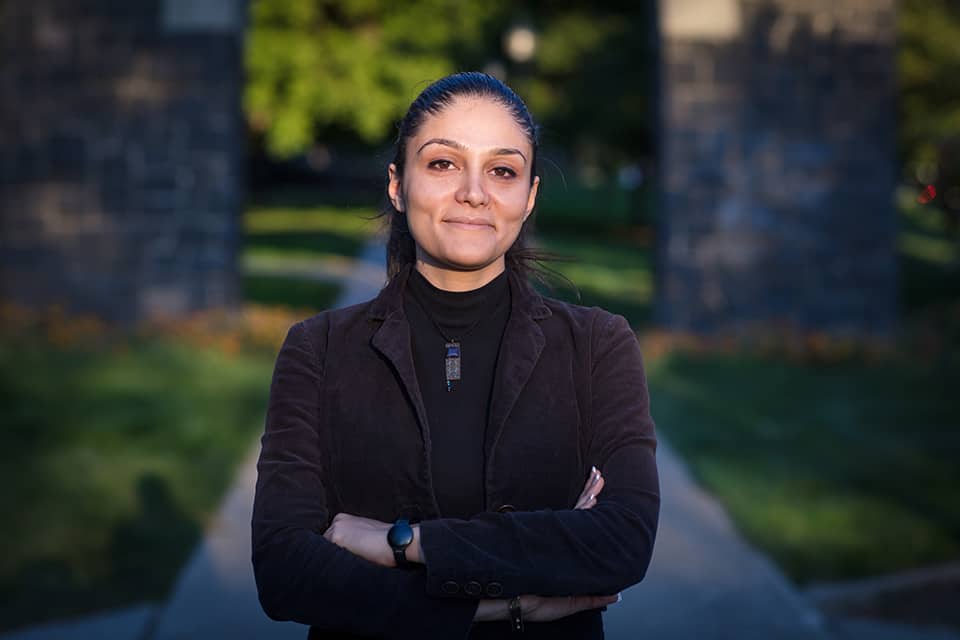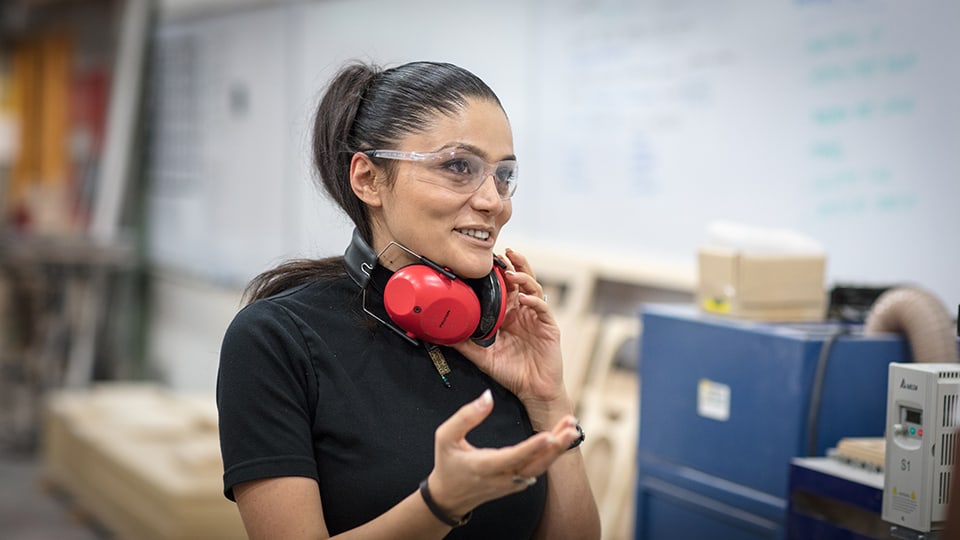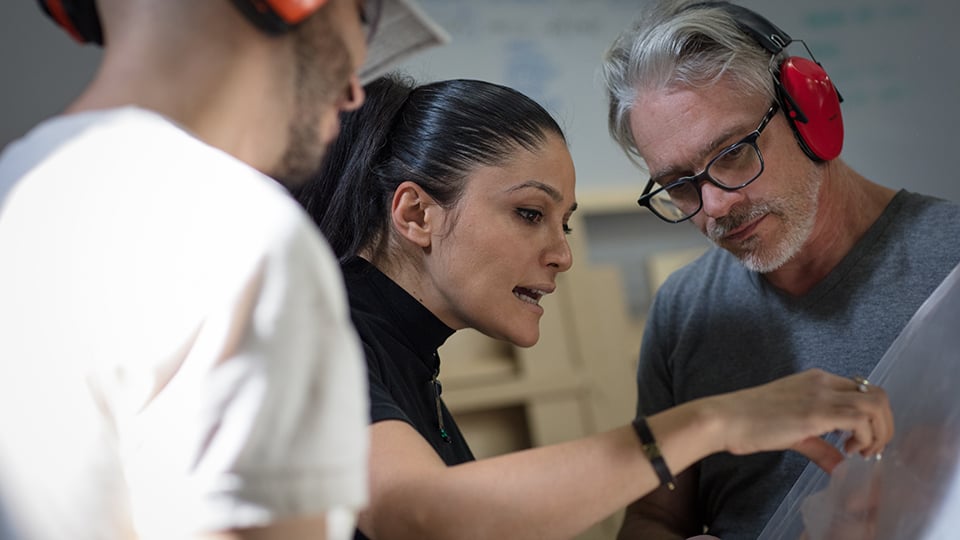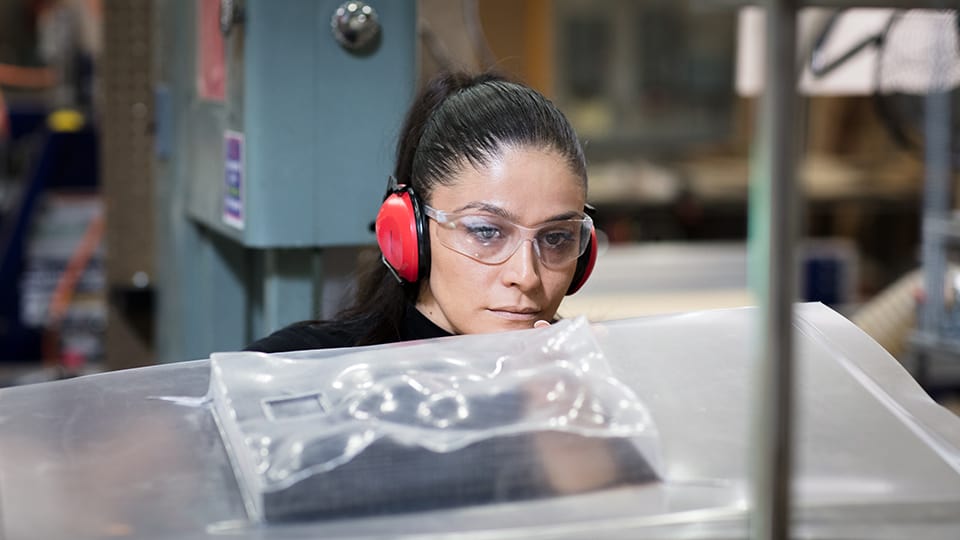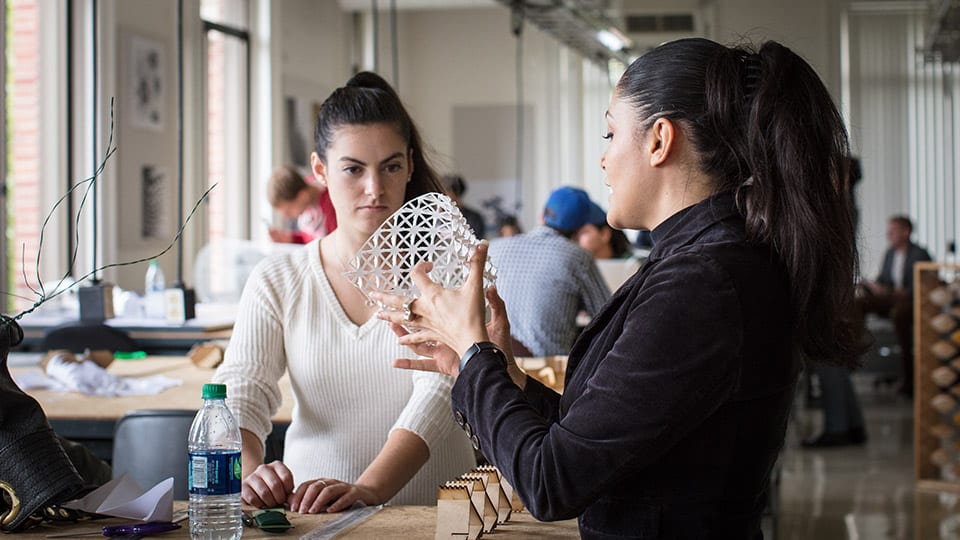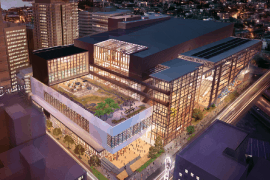Mona Ghandi is working across disciplines to make architecture more adaptive
written by Sheila G. Miller
What if your apartment could change the lighting, window size or wall configuration depending on your mood? Mona Ghandi wants to make that a reality.
Ghandi was born in Iran and earned her bachelor’s and master’s degrees in architecture from Tehran University. In 2012, she earned another master’s degree from the University of California, Berkeley, and is now an associate professor of architecture and design at Washington State University. Most recently she received a Vilcek Prize for Creative Promise, which is given to young immigrants who are showing signs of being high achievers in fields like biomedical science and the arts.
Her focus is in computational design and compassionate spaces—more on that later. In a word, she wants buildings to change depending on what their users need. The building, she believes, should be more of a living organism that can adapt as necessary, especially for people who might need a little extra help making their environment work for them.
In layman’s terms, what is computational design?
Computational design looks at how we design a building. Rather than just being involved in the geometry and shape of the place and the building, we can encode a set of instructions and let that generate a design. Computational design is a change of medium, from geometry to logic. We use coding, computer language, to enhance a space.
I believe computational design can provide diverse aspirations—artistic expression, efficiency, a scientific approach in the design. It can also help to optimize the building practice based on its parameters. It can help you evaluate before you start building, so it prevents mistakes and saves a lot of money. And it helps in the sustainability approach—you can analyze and simulate the environment and make an informed decision before you start building.
You speak a lot about building compassionate spaces. What does that mean and how does it manifest itself in your work?
This is truly my motivator. I am interested in the idea of how we can make a building concerned with healing—both the user and society’s well-being. So, the strategy changes from a rigid architectural structure to a transformable structure that takes into account an individual’s emotions and feelings. This combines architecture, computer science, materials science, robotics and psychology.
It’s the idea that spaces can have empathy, that they can heal and empower the user by understanding and accommodating the user’s needs. That can happen with a chance in the shape of the building’s environment, for example. Whatever the user wants, the building will act accordingly and it will make the user feel better.
How does that work, exactly?
The building would be able to make changes based on user behavior. Currently we are gathering neurological and biofeedback data, things like heart rates, brain waves, blood pressure, electromagnetic charges in the body, to create smart data. The idea is, ‘How can the synapses in the brain trigger changes in the building?’ Maybe we can make the user and the building into a single entity and dissolve the boundaries.
We are collecting that data and then finding materials that can respond in kind, so that structure needs to be kinetic and transformable and be able to perform some configuration—moving back and forth, opening
and closing.
It seems like this work would be perfect to assist people with disabilities.
That’s the whole purpose—to move toward democratizing buildings. My research tries to provide access to underrepresented people who have always been limited to the final design of a building environment without taking into account their preferences or needs. This works for two groups of people—those with disabilities like a spinal cord injury who cannot move, those who are not disabled but are having a hard time taking care of some stuff becuase of their ages, and then some are disabled mentally—they can’t communicate or express feelings and emotions. What we’re trying to do is give them more control over their environment.
And how does that work?
We collect data from the user. For those with physical disabilities, the user would have the opportunity to control the structure just by looking at it. So you move your head, or your eye, and they can open or close a window that way. They can change the size or location of the window, a wall can transform to offer a desk or to offer a table or shelves, and when needed it will go back to the neutral wall.
The other group we gather is emotional data—the building can guess your mood or feeling by your tone of voice, your heart rate, your body temperature and make changes accordingly. And then these changes in the space could be used as a communicative tool for parents or others, and the building could be used to change or improve your mood.


